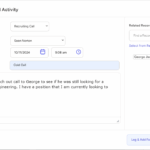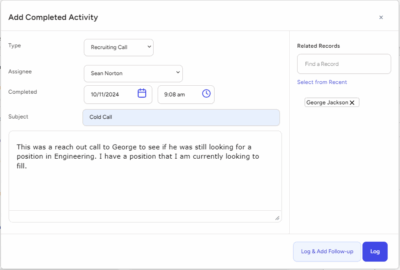You’ve heard the phrase before: “Two heads are better than one.” With that being said, three or four heads are probably even better than two. But for the purposes of our discussion of a recruitment team, two heads will do just fine.
Why two? Because two represent the amount of heads involved in a split fee recruiting situation, at least as far as the recruiters are concerned.
Team recruitment dynamics
The recruitment team approach using split placements is a solution-based approach. That’s because one of the recruiters has a job order and needs a candidate. The other recruiter has a candidate they want to place, but they don’t have the ideal job in which to place them.
In fact, in a formal split placement setting, like a recruiting network, the two recruiters even have specific names. Those names are “exporter” and “importer.”
The recruiter with the job order is typically referred to as the “importer” (as in “importer of candidates”). The recruiter supplying the candidate is referred to as the “exporter” (as in “exporter of candidates”).
Once again, in a formal split placement situation, this is what happens:
- Once the importer places the candidate supplied to them by the exporter and receives a fee from their client, a completed split placement has occurred.
- As per their agreement (and there IS an agreement), the job order recruiter sends the candidate recruiter their portion of the placement fee.
The beauty of this recruitment team approach is that, theoretically at least, both recruiters make an investment in the process. They both work to make the placement happen and hopefully work together as a team. As mentioned, this is a solution-based approach. Just about any recruiter will agree that placements solve a lot of problems.
So the question is this one: what is the key to the recruitment team approach of making placements? Well, Top Echelon Network has been in business for over 30 years. We’ve seen this dynamic “up close and personal,” so we know what of we speak. The answer to that question is . . . relationships!
Relationships are the key to the recruitment team approach, specifically the relationship between the two recruiters involved. The better the relationship, the more successful the recruitment team. However, we’re going to take the answer to this question one step further. That’s because we’re going to delve into what characterizes a successful recruitment team.
We’ve witnessed some awesome split recruiting partnerships over the years. During that time, certain trends and patterns have emerged. As you might imagine, we’ve been keeping track of those trends and patterns, and we’d like to present them here.
Based upon our experience with members of Top Echelon’s split placement network, below are seven characteristics of great recruiter relationships:
In fact, we’ve gathered those certain characteristics together in this blog post. Based upon placements made in the Network, below are seven characteristics of great recruiter relationships:
#1—Collaboration
The recruiters involved have a desire to make split placements and a desire to work together in a collaborative fashion. That means one recruiter doesn’t try to boss the other recruiter around. And it certainly does NOT mean that one of them tries to micro-manage the situation. That will ensure that the process goes nowhere in a hurry.
#2—Cooperation
The recruiters may have a desire to make splits and work together initially, but that desire must compel them to fully participate in the “give and take” needed for a successful relationship. Both recruiters are full participants in the process. One does not leave the other to do all the work, while still splitting the placement check.
#3—Responsiveness
Time kills all deals. That means time is money. That’s why the best relationships include trading partners who respond and who respond quickly. A lack of responsiveness is a great way to brand yourself the wrong way was a split partner.
#4—Communication
It’s not just the frequency with which you communicate, but also how well you communicate that makes the difference. The recruiting profession is a data-driven profession, one in which information and its dissemination are extremely important.
#5—Motivation
This speaks to a sense of urgency. If hiring managers must have a sense of urgency, trading partners must have it, as well. This ties in well with “Responsiveness.” If you’re motivated, then you’re probably also responsive.
#6—Niche knowledge
When a recruiter knows their niche thoroughly, that allows them to act quickly make the correct decisions regarding people and situations. They can then share that information with their split partner, making sure that everybody is on the same page.
#7—Candidate assessment
The ability to identify top talent will always give recruiters an edge, no matter if it’s a split placement scenario or a full-fee situation. This is where recruiters can complement one another with their talents. (Not compliment them FOR their talents . . . although they can certainty do that, as well.)
The bottom line IS the bottom line
And that’s the bottom line with the recruitment team approach: more placements. If you have job orders that you can’t fill with the candidates you have, then use another recruiter’s candidate. Who cares if you have to split the fee with that recruiter?
After all, “half a loaf is better than none.” Half of something is better than all of nothing.
Same thing with candidates. You might have an A-level superstar candidate who is ready to make a move . . . but only for the right opportunity. If you don’t have that opportunity, then use another recruiter’s job order. Who cares if you have to split the fee with that recruiter?
And while you’re solving your own problems with this recruitment team approach, you’ll also be providing recruiting solutions for your clients’ problems along the way. They’ll reward you with more job orders.
For even MORE placements!








